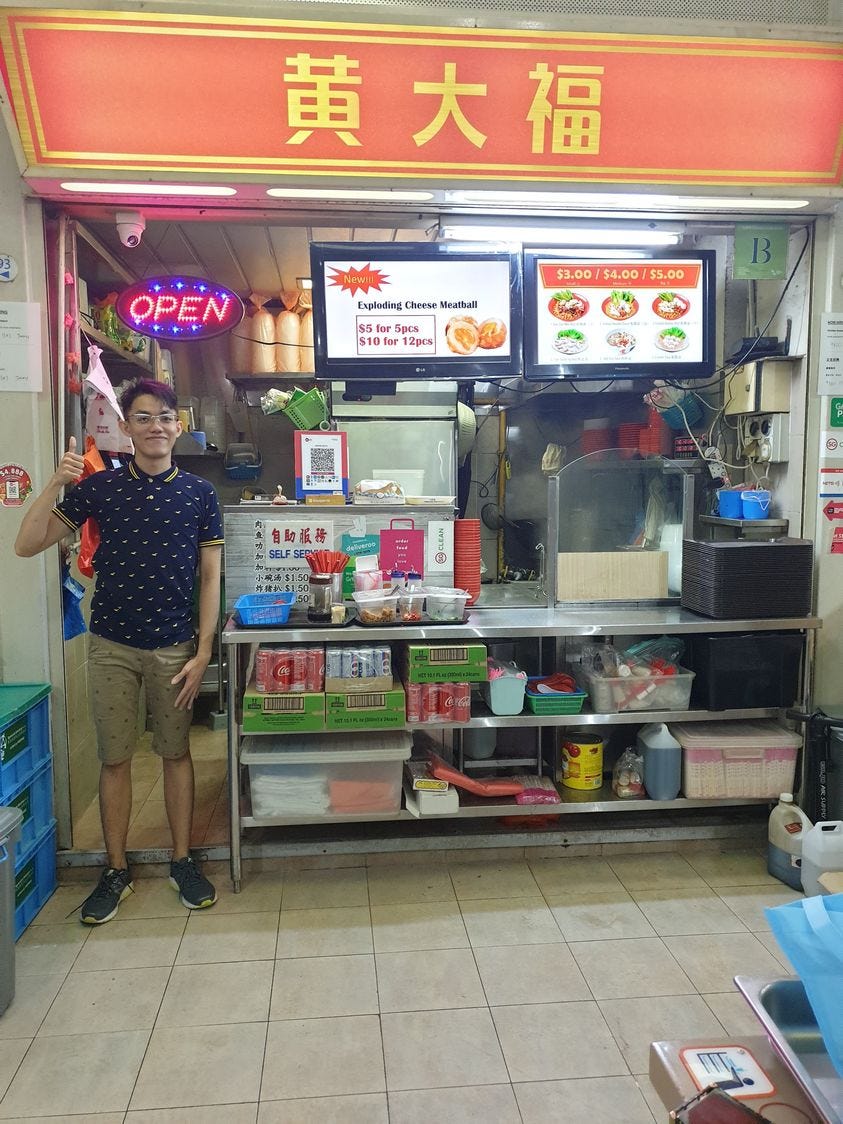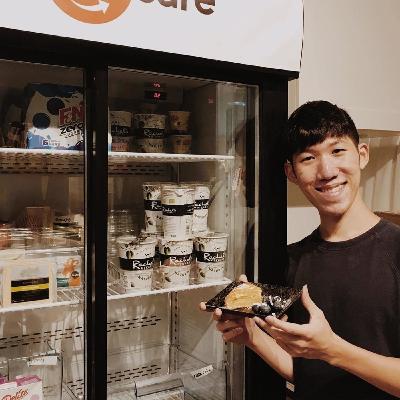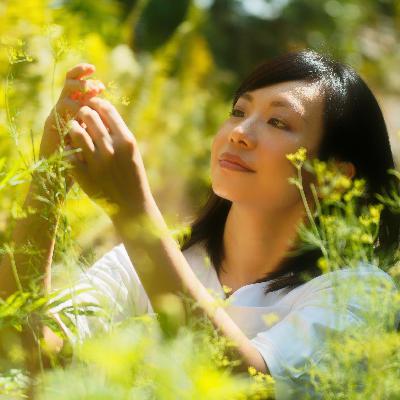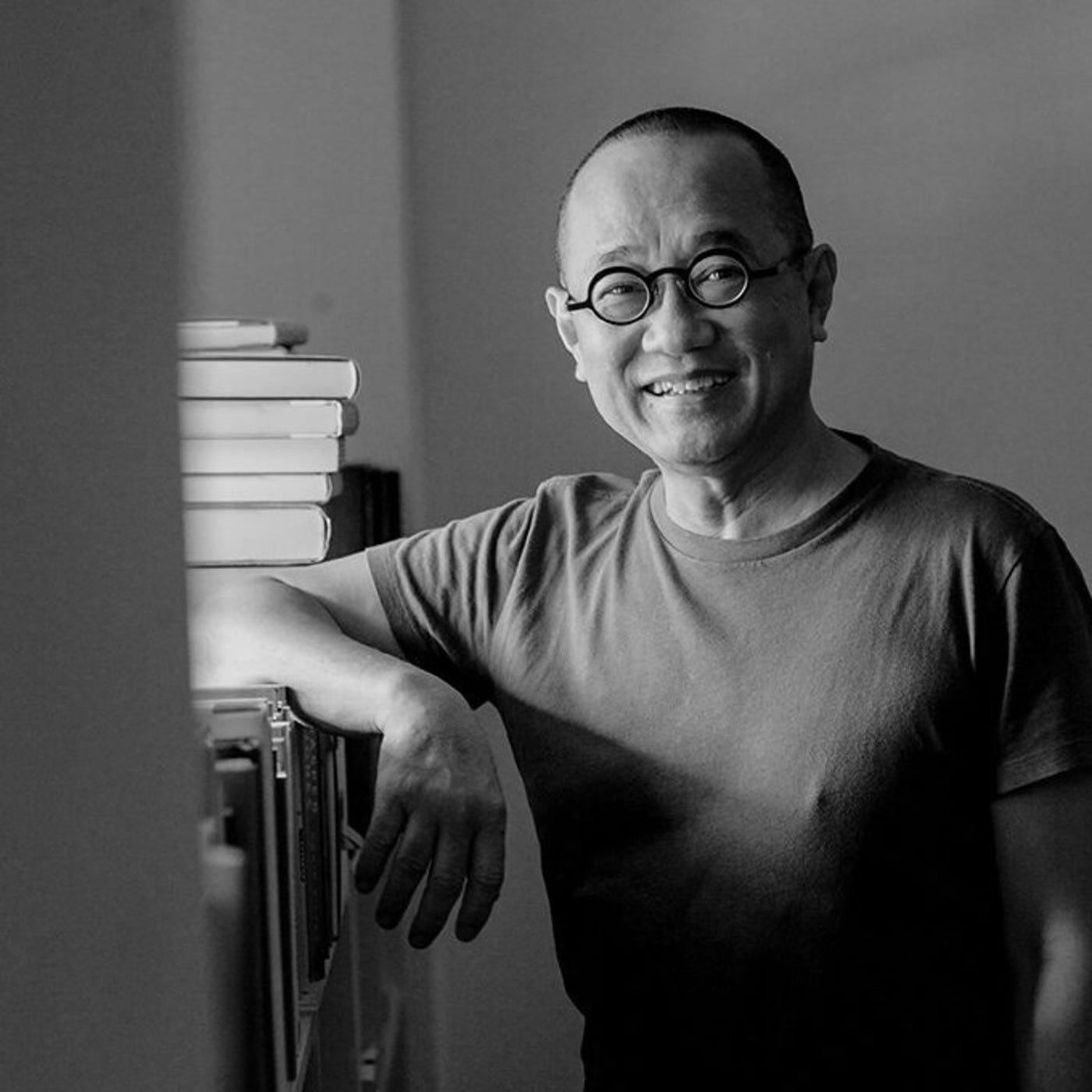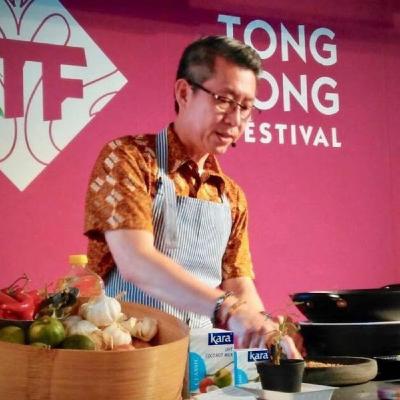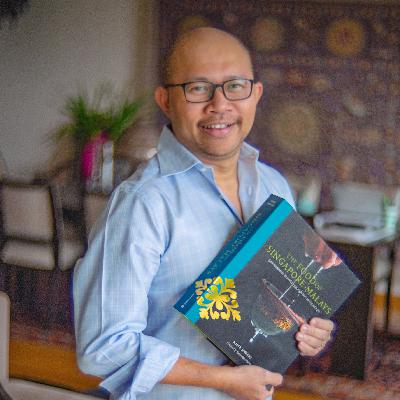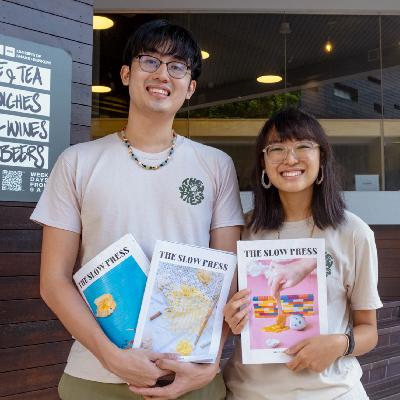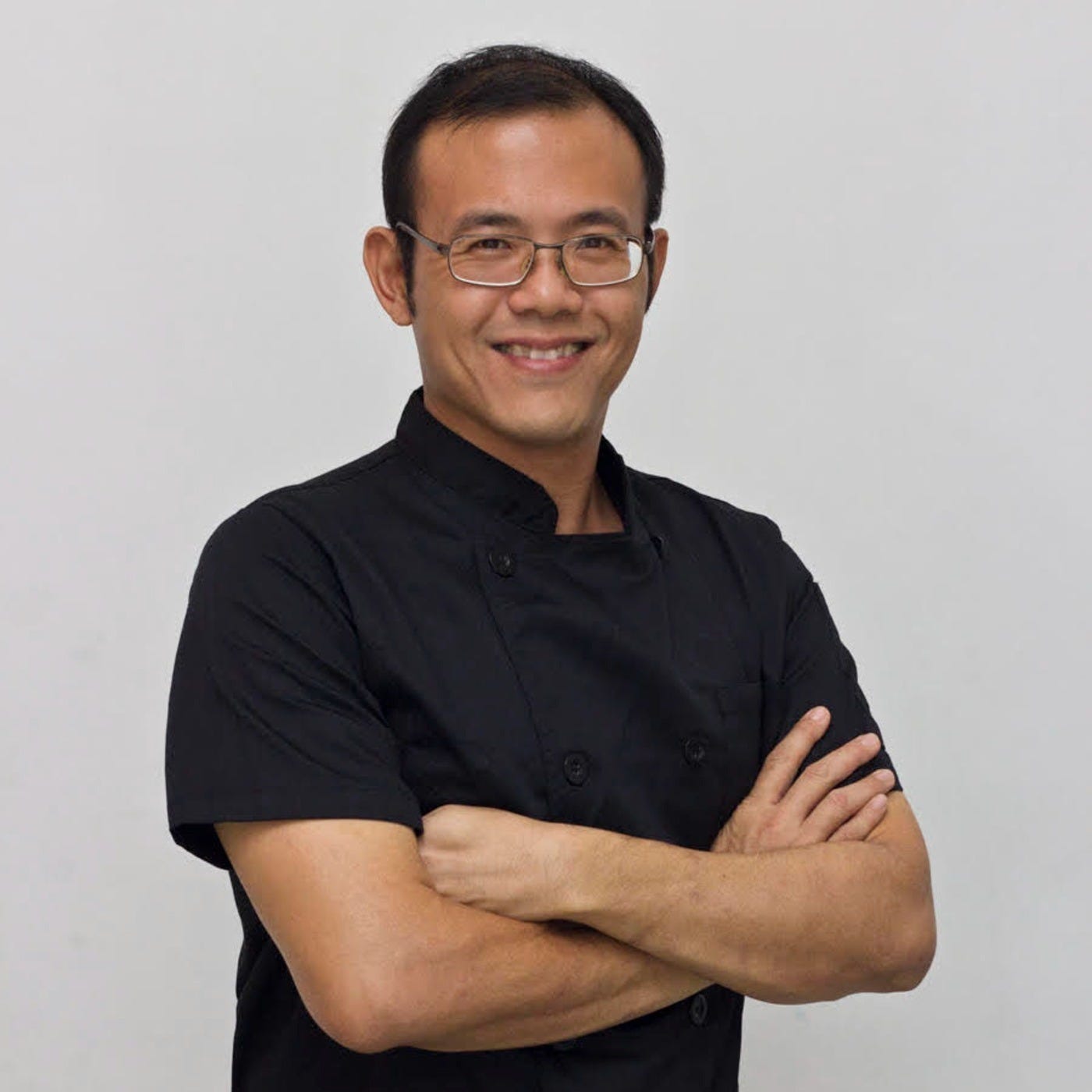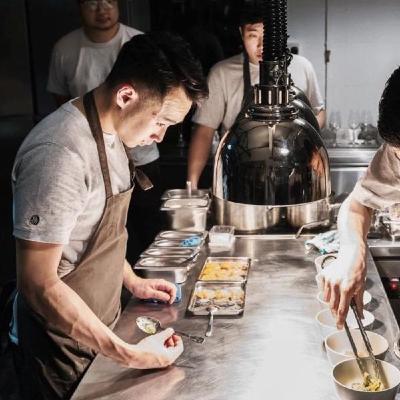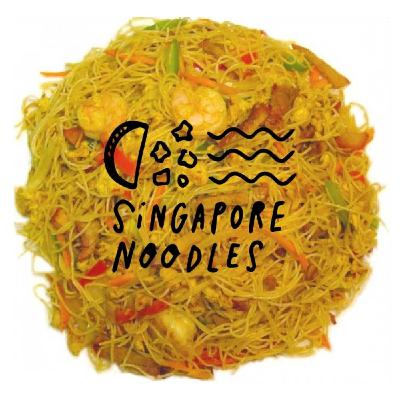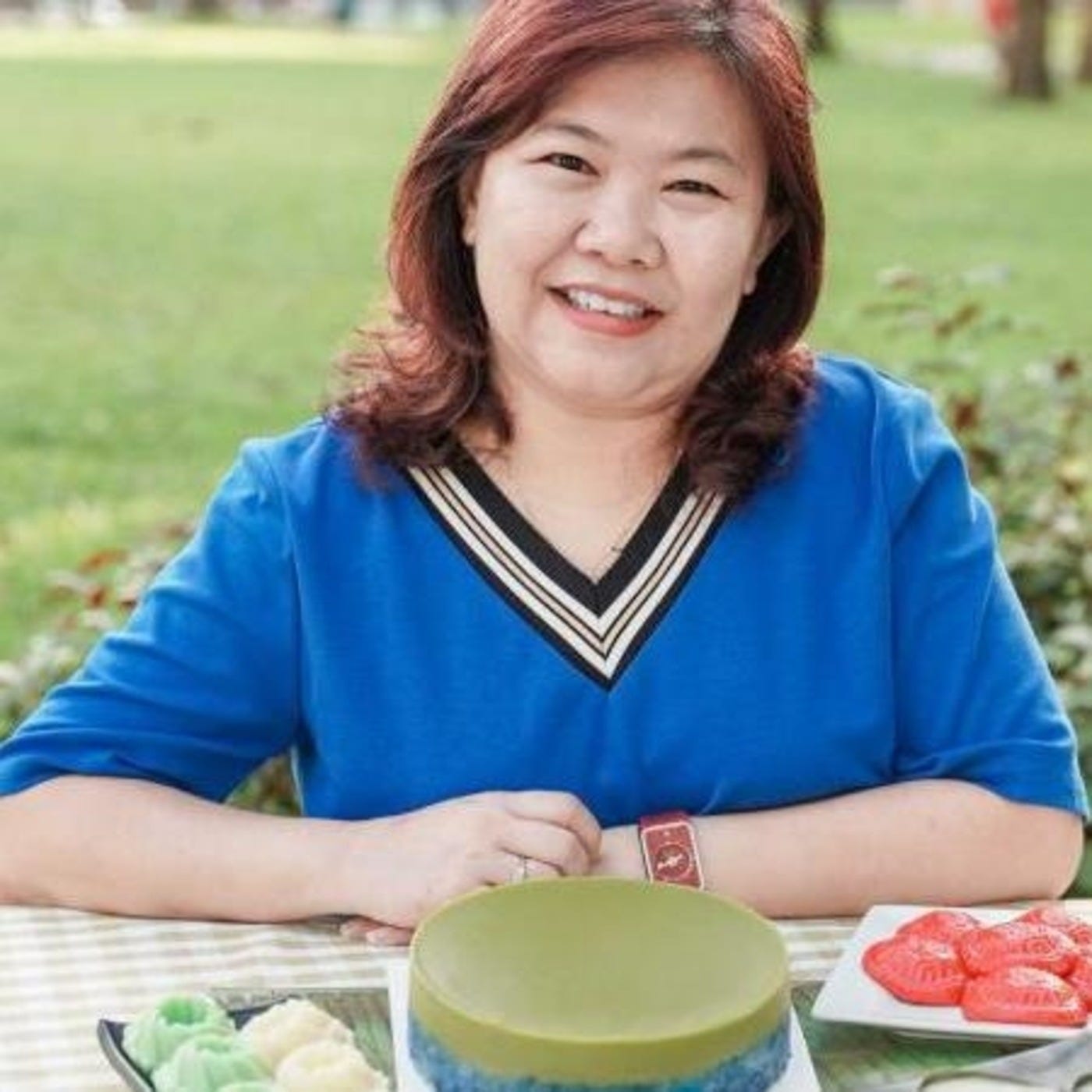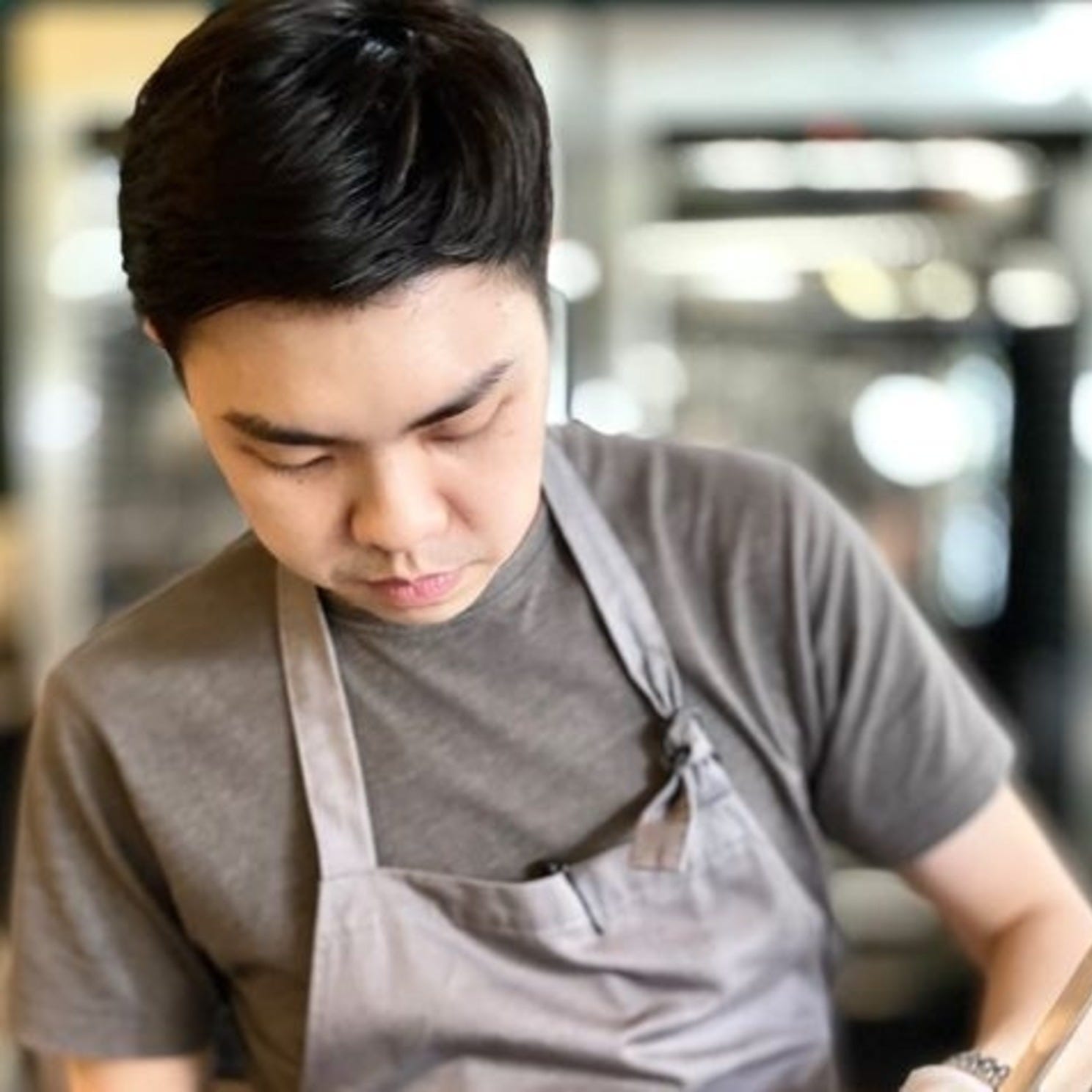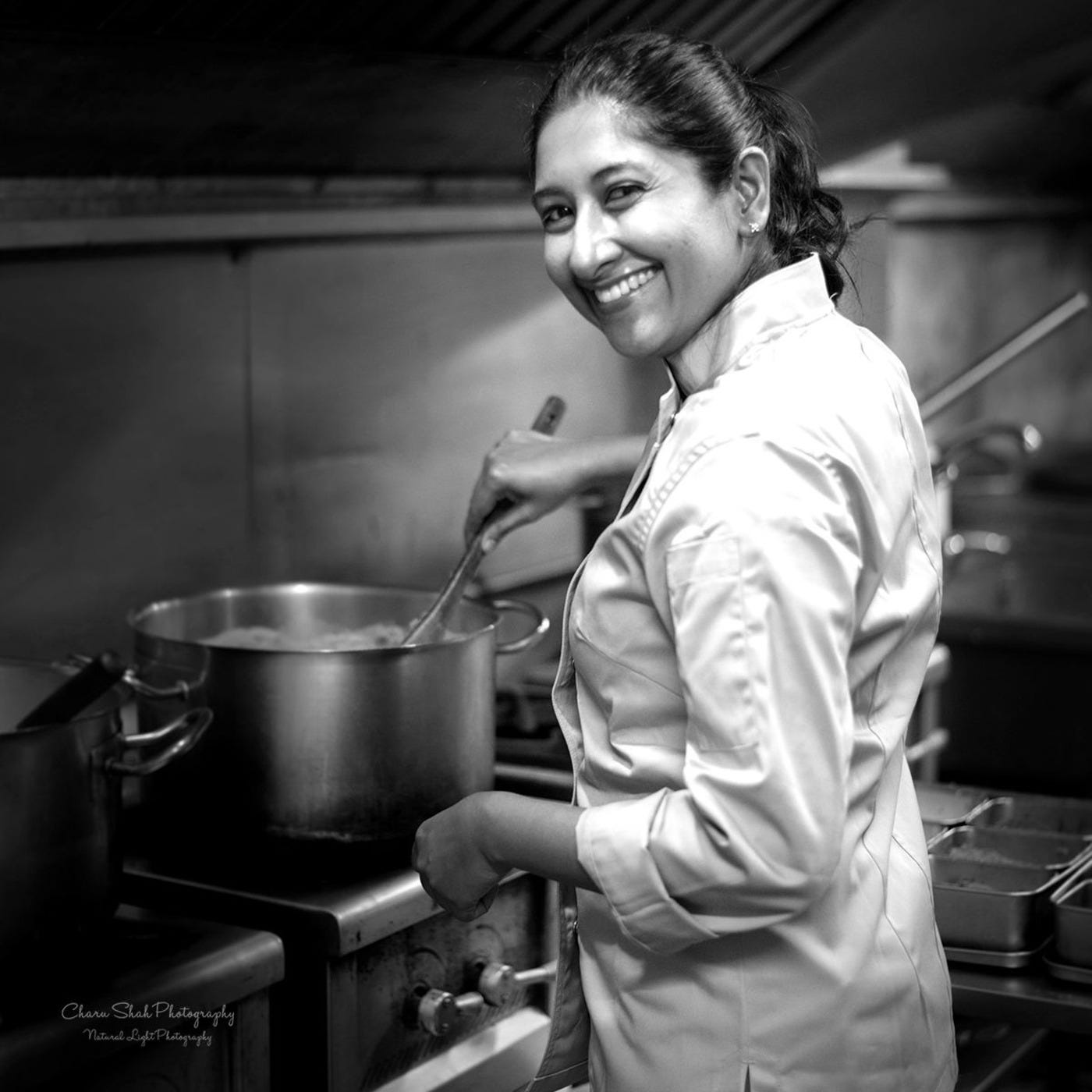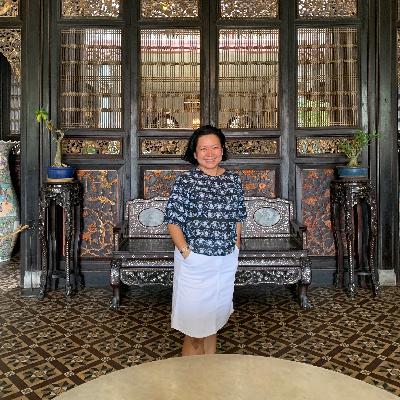Discover The Singapore Noodles Podcast
The Singapore Noodles Podcast

The Singapore Noodles Podcast
Author: Pamelia
Subscribed: 21Played: 288Subscribe
Share
© Pamelia from Singapore Noodles
Description
The Singapore Noodles podcast features host Pamelia Chia, founder of Singapore Noodles, engaging in open, honest conversations with people who are keeping Singaporean food heritage alive in their own ways. Join us to learn about how we can take an active role in preserving and embracing our Singaporean food heritage and culture.
sgpnoodles.substack.com
sgpnoodles.substack.com
79 Episodes
Reverse
Over the weekend, a commentary that I wrote on hawker prices was published on CNA and has sparked a bit of debate. Much of the discussion has been robust and I thought I’d share my views on some of them: “Letting hawkers set their own price at will is going to raise the cost of living for everyone. Thus, price controls are justified.” Some have argued that even though Singapore is a first world nation, the cost of housing and car ownership (though whether this is truly a necessity in Singapore is debatable) is a lot higher than many of its counterparts. The only thing that is keeping our cost of living in check is cheap hawker food and it’s been this way for decades, with keeping hawker food affordable being “a cornerstone of government policy”. But while cheap food might have been a possibility when hawkers were offered rent subsidies by the government, now with more than half of our hawkers not being on subsidised rents, that narrative is broken. “If it’s not cheap, it’s not hawker food.” Because the ideology of hawker food being cheap food has been so pervasive, anyone who has grown up in Singapore in the past couple of decades would feel bothered by price hikes. This is an intuitive, reflexive response which is inevitable, even for someone like me who has grown accustomed to paying at least S$15 the minute I leave my home for a sit-down meal in Australia. Also, given that hawker prices are in the single digit range, any price hike feels significant (for example a rise of S$4 to S$6 is a 50% increase) and feelings of outrage even more knee-jerk. If hawker food is not “cheap” and patrons have to clear their own trays and put up with no air-conditioning, some say that there is no reason to eat hawker food. “Might as well eat in an air-conditioned eatery.” Therein lies the problem - inherently, do we recognise the value of our hawker food? Do we truly feel that it is unique, world-class, and intangibly precious - everything we claim we believe when we nominated it for UNESCO? Because if we do, then the best way for us to demonstrate that belief is to put our money where our mouth is. Comments that I read that grind my gears include things like: “Hawkers are using the excuse of inflation to charge higher.” or “Only when your food is good, then you can increase the price.” There was also this 8days article that I find troubling on many levels - the journalistic angle that emphasised the hawkers’ “uncommon sense of gratitude” when they choose to keep prices low amid economic pressures, and the way hawkers have internalised society’s expectations of them fulfilling the role of a social worker or charity in feeding “people with no money”. I referenced the article and addressed the line of thinking in these comments in the CNA938 radio interview that I’ve embedded in this newsletter. What is worth our time discussing are solutions, especially with regard to considerations for low-income households & the problem of high rental and miscellaneous fees that plague hawkers. While 40% of hawkers are on the subsidised rental scheme (who pay between $56-320 per month), most have their rentals determined via a bidding system. The upper limit for this is usually S$5,000 but it can go up to even $10,000 a month as the fees are entirely dictated by the free market. And then you have hawkers whose landlords are not the government, but corporations such as Timbre who have been reported to charge an average of $4,000. How many plates of chicken rice would a hawker have to sell to break even and not make a loss - and we are only talking about rent as one part of the cost equation! KF Seetoh, our country’s loudest voice for the hawkers, proposed that “the authorities get rid of the bidding process, offer a fair rental and give it to the most deserving ones, may it be based on the menu, talent and preservation of Singapore’s unique food culture.” But this opens up a can of worms. With demand surpassing supply of available stalls, how do we decide who is the most deserving? How do you quantify talent, especially amongst hawkers who cook in such varied styles? A lot of food for thought, and definitely important discussions we should all have, if we are to ensure that our hawker food culture is to be preserved and kept alive for generations to come. If you have a perspective, please comment via the link below - I would love to hear from you:Singapore Noodles is a reader-supported publication. If you are able, please consider becoming a paid subscriber (or gifting a subscription to a friend). Thank you! Get full access to Singapore Noodles at sgpnoodles.substack.com/subscribe
Five to six years ago, when I was working on Wet Market to Table, I came across the menu at Nouri where regional vegetables and fruit were celebrated in new and unexpected ways. Lots has changed since then and it is not uncommon now to see young chefs working with produce from our markets, but back then, it definitely got my interest. I’ve wanted to have a conversation with Chef Ivan for quite some time, but it never happened, owing mainly to the fact that I was leaving for Australia… so it was great that this chat finally happened and that it is on this podcast! Ivan believes strongly in how food can connect us all, and he expresses it with eloquence. Towards the end of the conversation, he talks about how to keep tradition alive is to embrace “the Indian hand cooking Hokkien mee, and the Chinese hand folding prata”, and it is such a moving, beautiful picture of what our society and the Singaporean food fabric could look like. Instead of having sharp boundaries drawn around dishes, food can be such a unifier and common ground for us all! I hope you enjoy this episode. And please let me know if you do... I always love getting comments and suggestions from listeners. Get full access to Singapore Noodles at sgpnoodles.substack.com/subscribe
The Singapore Noodles podcast is back... and integrated into the newsletter! In this episode, I chat with Jimmy Teo, a young hawker who runs Huang Da Fu Bak Chor Mee at Commonwealth Crescent Market Food Centre. Pricing has always been a hotly debated issue when it comes to hawker food, and Jimmy shares candidly about struggles that hawkers face, and how we can keep hawker heritage alive by simply stepping into our own home kitchens. If you’d like to visit Jimmy and taste his bak chor mee, you can do so at: 31 Commonwealth Cres, #02-94, Singapore 149644.On the same note, I recently wrote an article for CNA on hawker food prices abroad. Feel free to check that out if you’re keen, or leave a comment here on what you think about the pricing of hawker food in Singapore or overseas: Get full access to Singapore Noodles at sgpnoodles.substack.com/subscribe
Vasunthara Ramasamy: "There are so many styles of chicken curry; there is even a white chicken curry. If Clarissa cooked that, people would say that that is not a Singaporean chicken curry. So what is Singaporean chicken curry? Do we have one? The consensus is that we can never have a national dish because it is very hard to represent Singapore. But why seek for singularity when you are so diverse? Why do we seek such homogenous experiences with Indian food?"Vasunthara Ramasamy, Culinary Teacher and Masterchef Singapore Season 2 Contestant, shares about feeling pride as a Singaporean Indian, plus: *No-grind thosai* *How we can bring Indian home dishes to the masses* *Singaporean Indian food as a diasporic cuisine* *How Singaporean history impacted Indian food in Singapore* *Sardine curry* *Caste and Indian food culture* *Sense of inferiority that Singaporean Indians feel towards their food* *How the palate of Singaporean Indians differ from Indians in India* *Fish head curry* *Caste in Singapore* *Homogenization of Indian food in Singapore and Malaysia* *The rise of curry powder* *The case for making your own curry powder and spice blends* *Grinding your own turmeric powder and asafoetida* *Preconceived idea that Indian cuisine is not on par with European cuisine* *The need for more champions of Indian food* *Singaporean chicken curry saga* *Fear of failure as Singaporeans* *Home-cooking* *Her Masterchef journey*Singapore Noodles: http://sgpnoodles.com/ @sgpnoodlesNewsletter: http://sgpnoodles.substack.com/ Get full access to Singapore Noodles at sgpnoodles.substack.com/subscribe
Preston Wong: "The goal should always be to make the message of sustainability and reducing food wastage as mainstream as possible. What point is there if it is just within that echo chamber of eco-conscious people? For us, we can break that barrier because price is not a big issue unlike other sustainable merchandise that may face challenges of accessibility due to price point issues. I would think that surplus food is a good bridge and show people that things can be affordable, and yet can be good stuff if you look beyond the exterior and short-dated condition of the item."Preston Wong, CEO and lead innovator at Treatsure, shares about how his business tackles the problem of food waste, plus: *Reducing wastage from buffet lines* *The difficulties that buffet restaurants and hotels face in estimating the amount of food to prepare* *Grocery wastage* *Collaborations between partners and artisans to convert waste to new products* *Building a community* *The importance of education* *What keeps him going* *Using technology to reducing waste* *Why develop an app*Singapore Noodles: http://sgpnoodles.com/ @sgpnoodlesNewsletter: http://sgpnoodles.substack.com/ Get full access to Singapore Noodles at sgpnoodles.substack.com/subscribe
Evelyn Yap: “Singapore is not an agricultural country. That limits the kind of produce we get, but also, we don’t know what is out there because our habits have changed to shopping at supermarkets, as opposed to wet markets, which stock more diverse produce.” Evelyn Yap, chef & founder of Happivore, shares about her journey as a chef supporting farmers, plus: *How Rustic Canyon shaped the way she cooked* *Supporting farmers in Thailand* *How her experience in Thailand has impacted her as a cook* *Exposure to regional produce* *Favourite Asian vegetables* *Mental health* *How her Singaporean roots influenced her* *Fusion food* *Tips for making vegetables delicious* *Framework for learning how to use a new vegetable* Singapore Noodles: http://sgpnoodles.com/ @sgpnoodlesSingapore Noodles newsletter: http://sgpnoodles.substack.com/ Get full access to Singapore Noodles at sgpnoodles.substack.com/subscribe
Edmund Wee: “We don’t get a lot of chances to form relationships with people in our lives – we’re busy, we’re working. And you have to go shopping for your food. You either shop on Red Mart or the supermarket. Why do those two when there’s a third alternative, where you can do your marketing and at the same, you form relationships. Why not? It is so wonderful! So, it’s a no brainer for me to decide to go to the wet market. It is obvious to me to do so.” Edmund Wee, publisher & CEO of Epigram Books, shares his insights on the book publishing industry, plus: *Wet market tips* *How Epigram started publishing cookbooks* *Epigram’s focus on Singapore and Singaporean stories* *Process of making a book* *Selection process* *Margins in the book publishing business* *Is print dead?* *Why read a book or cookbook?* *Why go to the market* *How wet markets can be improved* *Will wet markets survive?* Shop Wet Market to Table via Epigram: https://epigrambookshop.sg/products/wet-market-to-table-a-modern-approach-to-fruit-and-vegetablesSingapore Noodles: http://sgpnoodles.com/ @sgpnoodlesSingapore Noodles newsletter: http://sgpnoodles.substack.com/ Get full access to Singapore Noodles at sgpnoodles.substack.com/subscribe
Christopher Ng: “It is heartwrenching every time I go back to Singapore, because I see the difference. And it is a significant marked difference every year. I try to go to the places that are familiar to me, but even those places are changing rapidly although certain places are still familiar, I wonder how long they are going to last.” Christopher Ng, the blogger behind Christopher’s Asian Delicacies, shares about his relationship with food growing up, plus: *Lakeview market* *The ungroundedness as an overseas Singaporean* *Kueh lapis* *Agak-agak approach* *The demise of home-baking and kueh-making in Singapore* *COVID’s role in preserving Singapore food culture* *Perceptions of Singaporean food culture* *Mastery in the kitchen* *The way the older generation instruct* *Food as love* *Singapore’s diverse food culture and crossovers* *Hae bee hiam* Christopher Ng’s blog: https://delicacies070.blogspot.com/Singapore Noodles: http://sgpnoodles.com/ @sgpnoodlesSingapore Noodles newsletter: http://sgpnoodles.substack.com/ Get full access to Singapore Noodles at sgpnoodles.substack.com/subscribe
Khir Johari: “When we look at our understanding of Malay food, it is typically based on a narrow window, and that is the hawker centre. If you get a chance to visit Malay homes (your Malay neighbours or friends), that is where you get to see things that you don’t normally experience… Reading and travelling help to inform, and with that, you’ll come to understand the diversity and beauty of Malay food, and look at it as a very healthy diet. Any food you eat in excess is bad, regardless of your background, ethnicity, or geography.” Khir Johari, author of The Food of Singapore Malays, shares about his new book, plus: *Who are the Malays* *How his interest in Singaporean Malay food began* *Lack in documentation of Malay gastronomy* *Mee siam* *Impact of urbanization and globalization on Singaporean Malay food* *Foraging in Malay food culture* *Ulam and seafood in the Malay diet* *Ways of cooking with greens* *Connecting with nature* *Concept of Peranakan in Singapore* *What can be problematic about the way Peranakan food is marketed these days* *Food as medicine* *Growing up years* *Kampong glam then and now* *Extinct dishes* *How we can embody the Malay ethos towards food in this modern day and age* *Hope for Singaporean food culture* Khir Johari: https://www.thefoodofsingaporemalays.com/ @khir19Singapore Noodles: http://sgpnoodles.com/ @sgpnoodlesSingapore Noodles newsletter: http://sgpnoodles.substack.com/ Get full access to Singapore Noodles at sgpnoodles.substack.com/subscribe
Christy Chua and Tan Aik: “Through my interviewing experience in school or at The Slow Press, I feel that sometimes when we talk to older hawkers or business owners, they might be quite unwilling to share about what they do. Sometimes they would dismiss it as, ‘I do this everyday, nothing new. It’s just normal going to work. I come here, fry some noodles and go home.’ They’d literally tell me that. I’m sure there’s a story but I can’t seem to dig it out of them, and that leads me to think, ‘Are those profiles being featured on mainstream media like Our Grandfather Story? Are those profiles that are willing to be videoed the only stories that will live on?’ Christy Chua and Tan Aik, founder & editorial director and editor-in-chief of The Slow Press, an independent food zine, share about the niche that The Slow Press is filling, plus: *Why focus on homecooked food content* *How media shapes the food preferences of the young* *Mission of The Slow Press* *Why do print?* *Featuring Filipino community and cuisine* *How their interest and curiosity in Singaporean food began* *Getting Gen Zs interested in local food stories* *Challenges in ‘preserving’ and documenting local food culture* The Slow Press: https://www.theslowpresszine.com/Singapore Noodles: http://sgpnoodles.com/ @sgpnoodlesSingapore Noodles newsletter: http://sgpnoodles.substack.com/ Get full access to Singapore Noodles at sgpnoodles.substack.com/subscribe
Christopher Tan: “I think what everyone needs to realise is that we all have a say in how the food culture of our country evolves. We all have a stake, we all have a say, and we are all culture makers. Your national food culture is not something that you should have to order in. It should be something that you stand in, you cook, you practice, and you live out. Your heritage is your anchor, your compass, and your passport from which you go and explore other places, but you hold your passport. I very much hope that the younger generations will take up home-cooking as an activity, as a hobby, not as a luxury but as a necessity…” Christopher Tan, writer, author of The Way of Kueh, and culinary instructor shares about the importance of home-cooking, plus: *Growing-up years in the UK* *How Singaporean food culture has shifted* *Motivation behind writing The Way of Kueh* *Agak-agak* *Challenges of kueh-making* *Parallels and differences between Western pastries and desserts, and kueh* *Vegetables in Asian desserts* *Why make kueh* *Social media, mastery, and repetition* *The shift from kampungs to HDBs* *‘Authentic’ and ‘traditional’* Christopher Tan: @thewayofkueh Singapore Noodles: http://sgpnoodles.com/ @sgpnoodlesSingapore Noodles newsletter: http://sgpnoodles.substack.com/ Get full access to Singapore Noodles at sgpnoodles.substack.com/subscribe
Desmond Shen: “We basically tried not to throw anything away, and I think one of the steps to do that is to name the thing by its part, instead of just calling it ‘waste’. If you are trimming carrots, you take away the carrot head, end, and peel – and you call that that. You don’t call it ‘trim’, you just call it ‘carrot peel’. What are we going to do with the carrot peel? What are we going to do with the carrot tops? What are we going to do with the end bits of the carrot… Especially with meat, there are so many parts that you throw away – in a chicken, you have the cockscomb, the windpipe. Once you start calling it ‘waste’, you tend to not regard it.” Desmond Shen, chef and founder of Tiffin Bicycle Club and Alter Native, shares about his food influences growing up, plus: *Decision to be a chef* *His interest in Asian flavours* *Creative process of pushing Singaporean flavours forward* *The importance of eating out and embracing kitchen failures* *Motivation behind starting Tiffin* *Reducing plastic and food waste* *His vegetarian menu* *Favourite technique for making vegetables delicious* *Challenges and considerations of serving food in a tiffin* *The Tiffin experience* *His upcoming project, Alter Native* Desmond Shen: @tiffin.bicycle.clubSingapore Noodles: http://sgpnoodles.com/ @sgpnoodlesSingapore Noodles newsletter: http://sgpnoodles.substack.com/ Get full access to Singapore Noodles at sgpnoodles.substack.com/subscribe
Sheere Ng: “Our understanding of inmates is they are either repentant or incorrigible. It’s black and white. But I think that the masak shows them to be abit more multifaceted, showing them to be loyal but ill-disciplined, angry but funny as well. I learnt something from trying to understand masak, and I simply wanted to tell that story…”Sheere Ng, author of When Cooking Was A Crime and co-founder of In Plain Words shares about the twists and turns in her career, plus: *How her love for food began* *Her journey into food writing* *Her experience as a food editor of Makansutra* *Working in the hospitality industry* *Where she got the idea for writing about prison food culture* *Why inmates cook in prison* *Food that Singaporean inmates were cooking in prison* *How writing the book helped her understand inmates better* *How she decided on food writing* *The importance of satisfying her curiosities and doing food research* *Challenges as a food researcher* *The importance of bilingualism* *What is Singaporean food* Sheere Ng’s book: https://inplainwords.sg/when-cooking-was-a-crime/Singapore Noodles: http://sgpnoodles.com/ @sgpnoodlesSingapore Noodles newsletter: http://sgpnoodles.substack.com/ Get full access to Singapore Noodles at sgpnoodles.substack.com/subscribe
Rebecca Koh: “Asian ferments used to be passed down by the word of mouth – from grandma to the mother, and from the mother to the daughters. If one generation decides, “I do not want to learn it”, then that's it… When I wanted to learn how to make rice wine, my maternal grandma had already passed on, so there's no way I could ask. I had to call my aunt and ask, “Is there anyone in Singapore you know who knows how to do it?”. And she said, “No, not in Singapore, but in Malaysia, maybe I can find out from you.” So that's why in Singapore, it is literally like a vanishing art. You can hardly find someone who can really teach you how to do it properly, step-by-step.” Rebecca Koh of Midnight Fermentary and Midnight Food Co., shares how fermentation helped her cope with insomnia, plus: *Different colours of glutinous rice wine* *Difference between red yeast rice and white wine cakes* *Process of making glutinous rice wine* *Superstitions/ science of fermentation* *Home-brewing shops in Singapore* *Fermentation fridges and storing wine under the bed* *Enjoying glutinous rice wine and lees* *The value of fermenting your own food* *What’s within the reach of a home fermenter* *Why there are chemicals in commercial ferments* *Why is there a lack of documentation for Asian ferments* *Where should a beginner start* Rebecca Koh: @midnightfermentary @midnightfoodcoSingapore Noodles: http://sgpnoodles.com/ @sgpnoodlesSingapore Noodles newsletter: http://sgpnoodles.substack.com/ Get full access to Singapore Noodles at sgpnoodles.substack.com/subscribe
I reflect on 2 years of Singapore Noodles, answer your questions and share about my plans for the platform in 2021, plus: *How I decide on guests to feature on the podcast* *Behind-the-scenes of the podcast* *How I stay inspired in the kitchen* *How being married improved my cooking* *My upcoming cookbook* *The Singapore Noodles Membership* Singapore Noodles: http://sgpnoodles.com/ @sgpnoodlesSingapore Noodles newsletter: http://sgpnoodles.substack.com/ Get full access to Singapore Noodles at sgpnoodles.substack.com/subscribe
Gladys Foo: “When we made love letters pre-pandemic, we all will go over to my mom’s place to help out. I come from a family of six siblings, so we have everybody in the different areas. I am in charge of rolling it, my elder sis is in charge of removing the love letters from the mould to pass it to me, one of my sis is in charge of monitoring it, my second sis is in charge of scooping it. My brother is the firewatcher to ensure that the fire is consistent… My siblings and I, we have a very special bond because we grew up with very little, and so the bonding is there. The sacrifice that all my siblings made for one other – we really appreciate it… That’s why we have a lot of these family activities. It’s that family closeness that brings everyone together, and so does the cooking.”Gladys Foo, founder of Kuehdys Foo, shares about her kueh-making business started, plus: *Her growing up years* *Love letters, nian gao, and yibua* *Factors contributing to the slow death of traditional kueh-making* *Why eating kueh is typically seen as an ‘old person thing’**The importance of homecooking and exposing children to traditional food* *COVID and the resurgence of heritage food and other upsides* *The communal aspect of kueh-making* *Origins of Hainanese cuisine* *Her family’s version of roast pork belly* *Chicken poop kueh and art buah* Gladys Foo: @kuehdysfooSingapore Noodles: http://sgpnoodles.com/ @sgpnoodlesSingapore Noodles newsletter: http://sgpnoodles.substack.com/ Get full access to Singapore Noodles at sgpnoodles.substack.com/subscribe
Shen Tan: “Passion doesn’t feed people – it doesn’t pay your CPF, it doesn’t pay your mortgage, it doesn’t pay for medical insurance. Singaporeans who say we are losing our hawker heritage, are, on the other hand, complaining on socials that ‘standards drop, so expensive, so little’. They can count, ‘Only got three prawns, only got two pieces of pork ribs.’ You have to ask yourself why? It is not the hawkers’ job to feed you guys for very little money. I was asked a question recently: How do Singapore’s hawkers put out the food at such low prices? It’s because they are subsidizing with their salaries!” Shen Tan, hawker, chef, and founder of OG Lemak & Ownself Make Chef, shares about her journey of transitioning from the corporate world to hawker life, plus: *Stereotypes and expectations of hawkers* *The baggage of family recipes and why ‘old’ is not necessarily better* *Nasi lemak and the twice-steaming method* *Her approach to healthful eating* *Evolution of hawker food* *Innovation in the heritage food space* *Reasons why heritage dishes vanish* *How hawker profit margins are stifling the growth of hawker culture* *Social media and hawkers* *Advice to aspiring hawkers* *Cloud kitchens* *Argument for embracing local vegetables* *How we can encourage hawker food to be more nutrient dense and healthy* Shen Tan: https://www.oglemak.com/ https://ownselfmakechef.com/ @chefshentan Singapore Noodles: http://sgpnoodles.com/ @sgpnoodlesSingapore Noodles newsletter: http://sgpnoodles.substack.com/ Get full access to Singapore Noodles at sgpnoodles.substack.com/subscribe
Marcus Leow: “If there ever is a lao po bing (wife biscuit) in a more modern flavour, I honestly don’t think that’s bastardizing a recipe. I would say that that’s a way of keeping up with times and moving forward, but at the same time, reminding us of our roots… Like with kueh, you have so many flavours nowadays but the ones that get sold out are the traditional flavours – like regular kueh salat but done very well. Even for ang ku kueh or bingkah ubi, the original flavours are still the best. So even though there is a lot of modernizing of flavours, as long as it is part of the conversation, we are still going on the right track.” Marcus Leow, head of product development at Naked Finn, shares about his Peranakan heritage, plus: *Kueh-making vs pastry* *Using vegetables in kueh* *The journey towards embracing his heritage* *Buah keluak and belimbing* *Applying techniques to keep heritage dishes and snacks alive* *Learning about new heritage ingredients* *His hopes for Singaporean food* *Favourite eats in Singapore* Singapore Noodles: http://sgpnoodles.com/ @sgpnoodlesSingapore Noodles newsletter: http://sgpnoodles.substack.com/ Get full access to Singapore Noodles at sgpnoodles.substack.com/subscribe
Sowmiya Venkatesan: “In chicken rice, chicken is the primary flavour. Your rice has the chicken flavour, your chicken has the chicken flavour, and the stock has the chicken flavour, because it is a celebration of the chicken. Whereas in India, the first thing you’d do for any meat dish is dumb down the meatiness of the meat. Whether it is a fish, mutton, or chicken, the first thing that they would do is marinate it. They would add lemon or spices so that fish doesn’t smell fishy, a chicken doesn’t taste like chicken – so it is a completely different approach from a cuisine perspective. Therefore, I understand and appreciate how difficult it can be [for Singaporeans to go vegetarian] because here, the primary flavour, is the meat. So if [one is] asked to make a dish without the meat, then [he or she does not] know what to do.” Sowmiya Venkatesan, founder of Kechil Kitchen, shares about the nuances in Indian cooking, plus: *Roti prata in Singapore vs paratha in India* *Things that people misunderstand about Indian cuisine* *How living in Singapore has impacted her approach to Indian cooking* *Tempering in Indian cuisine* *Cooking fats of India* *The concept of meat substitutes, or the lack thereof, in India* *Soya chaap, chunks, nuggets, and granules* *The recent shift in attitudes towards vegetarianism* *Envisaging delicious vegetarian dishes* *Concentrating umami* *Black salt* *Vegetable desserts of India* *Why Singaporeans find vegetable cookery so tricky* Singapore Noodles: http://sgpnoodles.com/ @sgpnoodlesSingapore Noodles newsletter: http://sgpnoodles.substack.com/ Get full access to Singapore Noodles at sgpnoodles.substack.com/subscribe
Sharon Wee: “I always thought my mom deserves a book of her own, and I thought, why not a full-fledged cookbook… Peranakans are very guarded about their cooking secrets and recipes. I was going up against older sisters and relatives who weren’t sure if I should be doing this, sharing this publicly. You can ask a lot of families – they would feel that way. You can ask them, ‘How do you make that achar’, and they’ll say, ‘Cannot tell you – it’s a family secret!’ But I took a leap of faith – I actually wrote them down because I felt like if I didn’t do that, over time, we would forget how the achar was crunchy in the first place, or the different things that they did.” Sharon Wee, author of ‘Growing Up in a Nonya Kitchen’ shares about her journey of learning to cook and connecting with her heritage, plus: *The way that vegetables were viewed in the past* *Motivations behind writing her cookbook* *Challenges encountered while writing her cookbook* *Saffron and evaporated milk in nasi briyani* *Reconciling health concerns with the Peranakan diet* *The fading generation of professional housewives and its impact on Singaporean food culture* *Her mantra of ‘practice makes perfect’* *The argument for cooking at home* *Keeping traditions alive in her new home* *How can heritage cuisine be preserved*Singapore Noodles: http://sgpnoodles.com/ @sgpnoodlesSingapore Noodles newsletter: http://sgpnoodles.substack.com/ Get full access to Singapore Noodles at sgpnoodles.substack.com/subscribe




